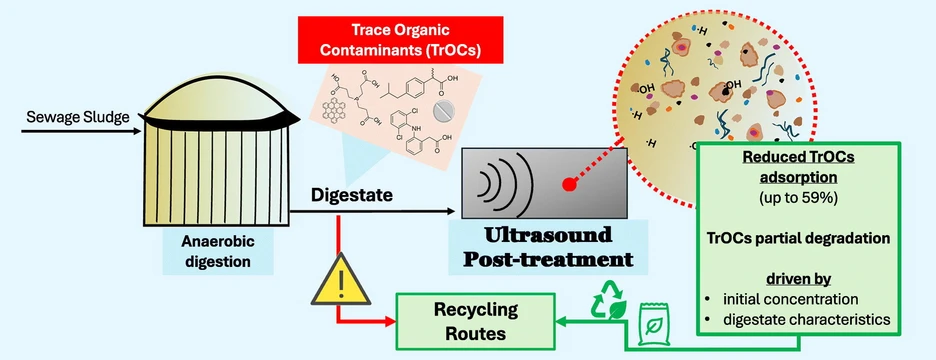Anaerobically digested sludge (ADS) represents a valuable source of nutrients for recovery within a circular economy framework. However, the presence of trace organic contaminants (TrOCs) in ADS raises concern about its safe reuse. This study is the first to investigate the application of low-frequency ultrasound (US) technology specifically for TrOC reduction in ADS. TrOCs were selected based on their inclusion in the latest revision of the Urban Wastewater Treatment Directive and their actual detected concentrations in real sludge samples. High-intensity US treatment, with energy inputs ranging from 140 to 340 kJ/L, achieved up to 59 % reduction of TrOCs in the biosolid fraction. This reduction was accompanied by an increase in TrOC concentrations in the supernatant, enhancing their availability for further degradation. Sonochemical degradation was verified through experiments conducted at maximum intensity in spiked water solutions, where the formation of transformation products was observed. The extent of mass transfer from the solid to the liquid phase was primarily influenced by the initial TrOC concentration and the digestate’s stability, with more stable digestates exhibiting higher TrOC degradation. Overall, this study provides new insights into the potential of US process as a green technology for ADS valorization, promoting both enhanced contaminant removal and improved nutrient recovery for sustainable sludge management.
